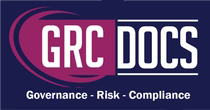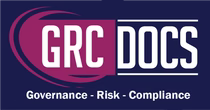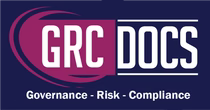NIST Compliance Workflow Automation | Simplify Audits
NIST compliance workflow automation
In today's fast-paced digital landscape, ensuring compliance with cybersecurity standards is crucial for organizations of all sizes. Among the various frameworks, the National Institute of Standards and Technology (NIST) provides comprehensive guidelines to help organizations manage and reduce cybersecurity risks. However, achieving and maintaining NIST compliance can be challenging without the right tools and processes in place. This is where NIST compliance workflow automation comes into play. By leveraging automation, organizations can streamline compliance processes, enhance accuracy, and allocate resources more effectively to maintain robust security postures.

Key Components Of NIST Compliance
The NIST framework comprises several key components:
-
Identify: Understand the organization's environment, including its assets, risks, and vulnerabilities. This involves conducting thorough assessments to map out all digital assets and the potential risks they face. Organizations must continuously update their understanding as new threats emerge and technology evolves.
-
Protect: Implement safeguards to protect critical infrastructure services. This includes deploying firewalls, encryption, and access controls to shield sensitive data from unauthorized access. Regularly updating these protective measures is crucial to counteract the evolving nature of cyber threats.
-
Detect: Establish processes to identify cybersecurity events promptly. Real-time monitoring systems and intrusion detection mechanisms are essential to spot anomalies early. Swift detection allows organizations to respond quickly, minimizing potential damage.
-
Respond: Develop response plans to mitigate the impact of cybersecurity incidents. An effective response plan outlines clear roles and responsibilities, ensuring that everyone knows their part in addressing a breach. Regularly testing these plans through simulations can improve readiness and response times.
-
Recover: Create strategies to restore services and capabilities after an incident. Recovery plans should prioritize critical services to ensure minimal downtime. Post-incident analysis helps refine strategies and prevent future occurrences.
Compliance with these components requires a systematic approach that can be efficiently managed through automation. Automation ensures that each component is consistently addressed, reducing the likelihood of human error and oversight.
The Role Of Automation In NIST Compliance
Automation in NIST compliance involves using software tools and technologies to streamline and automate various compliance-related tasks. This not only saves time and resources but also enhances the accuracy and consistency of compliance efforts. By integrating automation, organizations can shift from reactive to proactive compliance management, anticipating potential issues before they arise.
Benefits Of Automating NIST Compliance
-
Efficiency: Automation reduces manual efforts by handling repetitive tasks such as data collection, analysis, and reporting. This allows cybersecurity professionals to focus on more strategic activities. With automation, organizations can process large volumes of data quickly, providing timely insights into compliance status.
-
Accuracy: Automated tools minimize human errors, ensuring that compliance processes are conducted with precision and consistency. These tools standardize data input and processing, eliminating discrepancies that can arise from manual handling.
-
Scalability: As organizations grow, their compliance requirements become more complex. Automation allows for scalable compliance management that can adapt to changing needs. Automated systems can easily accommodate new regulations and standards, ensuring continuous compliance as the organization expands.
-
Real-Time Monitoring: Automated systems provide real-time insights into compliance status, enabling organizations to detect and address issues promptly. This immediate feedback loop is crucial for maintaining compliance in dynamic environments where threats are constantly evolving.
Implementing NIST Compliance Automation
To successfully implement NIST compliance automation, organizations need to follow a structured approach:
-
Assess Current Compliance Status: Before automating compliance processes, it's essential to evaluate the organization's current compliance status. Identify gaps and areas that require improvement, and determine which tasks can be automated. This initial assessment should involve a thorough review of existing policies, procedures, and technologies to understand their effectiveness.
-
Select the Right Compliance Management Tools: Choose compliance management tools that align with your organization's needs. Look for software that offers features such as risk assessment, policy management, incident response, and reporting. These tools should integrate seamlessly with existing systems for a smooth transition. It's important to involve key stakeholders in this selection process to ensure the tools meet the diverse needs of different departments.
-
Develop a Compliance Automation Plan: Create a comprehensive plan that outlines the automation strategy. Define the scope of automation, identify key stakeholders, and establish timelines for implementation. Ensure that the plan includes training programs to upskill employees on using the new tools. Setting clear objectives and milestones will help track progress and measure the success of the automation initiative.
- Implement and Monitor Automation: Deploy the chosen compliance management tools and begin automating tasks according to the plan. Continuously monitor the automation process to ensure it meets compliance objectives and make adjustments as needed. Regular audits of the automated processes can help identify areas for further improvement and refinement.
Best Practices For NIST Compliance Automation
To maximize the effectiveness of NIST compliance automation, consider the following best practices:
-
Regular Updates: Keep automation tools updated to align with the latest NIST guidelines and cybersecurity trends. Regular updates ensure that the tools remain effective against new types of threats and align with evolving regulatory requirements.
-
Employee Training: Provide ongoing training to employees to ensure they understand the importance of compliance and how to use automated tools effectively. Training should be tailored to different user roles, ensuring that everyone from IT staff to senior executives understands their responsibilities.
-
Collaboration: Foster collaboration between different departments to ensure a holistic approach to compliance. Involve IT, legal, and risk management teams in the automation process. Cross-departmental collaboration helps in creating a unified strategy that addresses all facets of compliance.
-
Documentation: Maintain thorough documentation of compliance processes and automation efforts. This documentation can serve as a reference during audits and assessments. Detailed records also facilitate knowledge transfer and help new team members quickly understand existing systems.
Conclusion
NIST compliance workflow automation is a game-changer for organizations striving to meet cybersecurity standards efficiently. By leveraging compliance management tools and automating repetitive tasks, businesses can enhance their cybersecurity posture, reduce risks, and ensure the protection of sensitive information. As the digital landscape continues to evolve, embracing automation will be essential for staying ahead in the realm of cybersecurity compliance. With the right approach and tools, achieving NIST compliance can become a streamlined and manageable process, allowing organizations to focus on their core objectives while maintaining a robust security framework. Automation not only simplifies compliance but also provides a foundation for continuous improvement in cybersecurity practices, ensuring long-term resilience against emerging threats.






